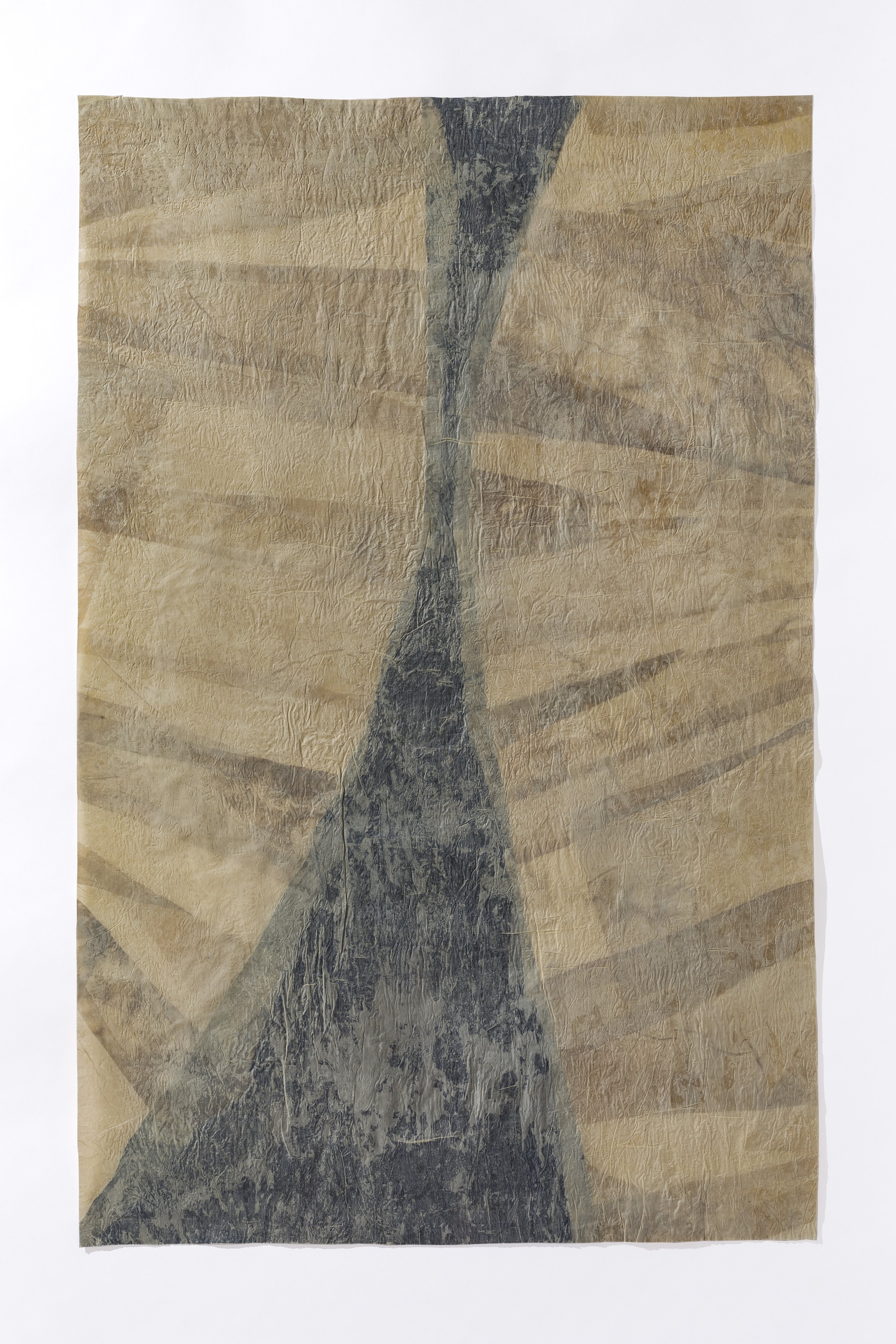By Way of Water: Bowery Gallery, New York City 2019
Large scale abstraction of Minnesota lake micro-organisms, waterway stained silk waxed assemblage
Organic Peace silk, waterway tannins and mineral mud stains, iron, thread, wax
Exhibition Essay, Jan-Lodewijk Grootaers and Julie McGarvie
For her 2019 invitational installation at the Bowery Gallery, Moira Bateman created abstractions from microscopic study of lake bottom sediments, including diatoms in waxed cloth assemblages created with natural waterway and sediment-stained silk from Minnesota’s bogs, rivers, wetlands and lakes.
Moira Bateman’s remarkable wax cloth assemblages combine organic shapes, earth colors, and unique textures to create abstract patterns of great aesthetic impact and beauty. Silk, dyed naturally with collected sediment and water, is cut, placed, heat set with wax, and stitched to create large scale tapestries. Inspired by the single-celled diatom algae found in the sediment used to dye the cloth, Bateman renders the rhythms, shapes and forms she looks at under the microscope to a larger than life scale. Uniting science and art, her work offers us a unique way to “see” what is hidden to the naked eye and conscious mind.
In between the miniature world of the diatom and the grand scale of the cosmos, Bateman’s work embodies the landscape. She leaves silk to soak in water, mud, and sediments from rivers, watersheds, and lakes in Minnesota. In the past, the cloth would be left for variable lengths of time in various locations, and the titles of her “canvases” would consist of the longitude and latitude of that particular spot. For the art on view here, in the Bowery Gallery, Bateman first collected water and sediments from different sites, and then let pieces of cloth soak in them in her workshop. The addition of a mordant, tannin or iron stabilizes the color, and sometimes extra dying is obtained by using logwood. The resulting assemblages are imbued with their environment—what the French call terroir with regards to their wines.
Along with place, time is essential to Bateman’s work. To begin with, the process of absorption is time-sensitive. Depending on how long the silk soaks in the natural stream or in the workshop, the colors and the surface patterns formed by currents, minerals, and micro-organisms will change. This element of time and interaction adds a degree of randomness to the process, whose outcomes are hard to control or duplicate. In recent years, another aspect of time has entered Bateman’s oeuvre. For the assemblages on view here, the artist worked closely with the St Croix Watershed Research Station. There, scientists pulled up tubes that are several feet long, filled with layers of sediment that date back hundreds of years. This mud is rich with diatoms, single-celled algae, whose dead cells and resting cells one can see under the microscope. The scientists will “hatch” these resting cells in their project of “resurrection ecology.” Fascinated by this project, the sight of sleeping zombie diatoms, and the fact that twenty-five percent of our oxygen is generated by these tiny algae, Bateman was inspired to represent their shapes and cell division. In her work. The resulting tapestries evoke a powerful expression of birth, death, regeneration—the perpetual cycle of life.
A skilled abstractionist, Bateman’s art stirs up feelings akin to those induced by the compositions of nature. Inspired by the land, water, and life-cycle of the diatom, Bateman renders a unique beauty and sense of movement through startling inter-lacings of textures, shapes, color, light and design. Even without scientific knowledge, we can view Bateman’s assemblages and intuitively recognize the grandeur of life at all levels. Literally made in collaboration with the earth, rivers and watersheds of Minnesota, Bateman’s art merges with nature, allowing us to explore the fragile, yet tenacious existence of life.
Photographs by Peter Lee









